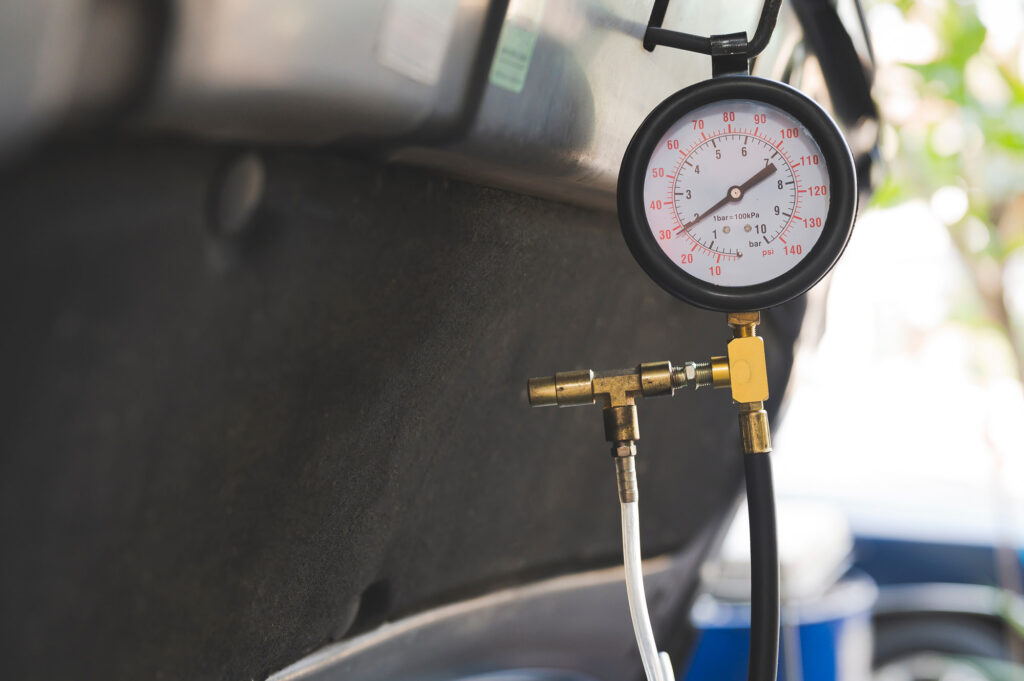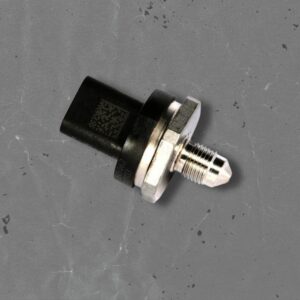If your car won’t turn on, starts slow, or burns through fuel faster than normal, there might be something wrong with its fuel pressure levels. Depending on the issue, they might have either risen too high or dropped too low. Either way, you’re going to want to check that out.
How to Test Fuel Pressure the Right Way
To start, you’ll need a fuel pressure test kit. These kits are made of two key parts: a gauge specially designed to read fuel pressure and the fuel hose it’s attached to. You can get your hands on a basic fuel pressure test kit for $70 to $80.
Besides the kit, you’ll need someone to help you rev the engine during testing. The process usually involves the following steps.
- Search for the specifications of your vehicle to learn what readings you should expect. This can be done by checking your vehicle owner’s manual.
- Open the hood and remove the cap attached to the fuel pump test point. It’s usually beside the fuel injectors.
- Attach the fuel hose to the fuel pump test point. Bleed the fuel pressure gauge to let out any air before getting your reading.
- Ask your helper to activate the ignition, then read the vehicle’s fuel pressure level.
- Take note of the levels indicated on the gauge.
- Remove the fuel pressure gauge and reseal the cap before closing the hood of your vehicle.
Search for the specifications of your vehicle to learn what readings you should expect. This can be done by checking your vehicle owner’s manual.
–Anthony Harlin, ASE Certified Master Automobile Technician
Fuel Pressure Readings and What They Mean

While good fuel pressure levels fall between 30-80 PSI, the ideal range typically varies depending on the engine. With that said, it pays to know what different fuel pressure readings mean for your ride.
Zero Fuel Pressure Readings
If your fuel pressure gauge gives you a reading of a flat zero even though it’s plugged in, the pump might be dead or not operational.
This could happen because the pin at the end of the gauge has come off or come loose. A faulty fuel pressure gauge might also be the culprit. Be sure to test for power and ground to the fuel pump afterwards to see if the pump is really broken or if there are other factors at play.
Low Fuel Pressure Readings
If your fuel pressure gauge gives you low readings, your fuel pump might be malfunctioning. For example, the fuel filter might be clogged or the pump itself might be faulty.
It’s a good idea to check for loose gas caps that might be preventing the tank from venting properly. If the readings don’t change after the gas caps have been tightened, you might need to change the fuel filter.
If your vehicle’s fuel pressure is too low, performance drops significantly. Its horsepower would decline, it would be harder to start, and the engine might stall more frequently.
High Fuel Pressure Readings
High fuel pressure readings could be caused by bad components. They might be a sign of a failing fuel pump driver or a malfunctioning fuel pressure regulator.
If your fuel pressure is too high, the engine’s performance will suffer. Your vehicle might also belch black smoke, run rough, and reek of fuel.

Frequently Asked Questions About Fuel Pressure
What should you do before using a fuel pressure tester?
Before testing your fuel pressure, make sure your tank has at least two gallons of fuel. Even if your fuel gauge shows that the tank is full, it’s better to confirm if the fuel gauge is operational. If it isn’t, you might have to manually inspect the tank and confirm it’s full for yourself.
After that, make sure your vehicle’s fuel pump is working. Without a fully functional fuel pump, you won’t be able to use your fuel pressure tester to get a proper reading.
What’s the ideal fuel pressure level to keep your vehicle at?
Ideal fuel pressure levels will vary from model to model. It’s worth mentioning that some engines need less pressure than others to reach peak performance.
Many older throttle-body injected systems only need 10 PSI, while multi-port injector systems usually need 60 PSI. Check your vehicle owner’s manual to determine the fuel pressure level recommended for your vehicle.
How does a vehicle’s fuel pressure levels affect its overall performance?
If a vehicle’s fuel pressure levels become too high, the engine will run rich, which means there’s too much fuel in the combustion chamber. If an engine runs rich, the vehicle’s fuel economy will decrease, affecting its performance.
On the other hand, if the fuel pressure levels drop too low, the engine will run lean. This means there’s too much air and not enough fuel in the combustion chamber, which could reduce engine performance. You might also experience stalling issues.
What are the most common causes of fuel pressure issues?
Fuel pressure issues occur when pressure levels either drop too low or become too high. A faulty fuel pressure regulator, obstructed return lines, malfunctioning fuel rail pressure sensors, and bad release valves could cause high fuel pressure.
As for low fuel pressure, common culprits include fuel system leaks, a failing fuel pump, clogged fuel filters, air getting stuck in the filter, and fuel gelling when the temperature drops too low.
Any information provided on this Website is for informational purposes only and is not intended to replace consultation with a professional mechanic. The accuracy and timeliness of the information may change from the time of publication.






























